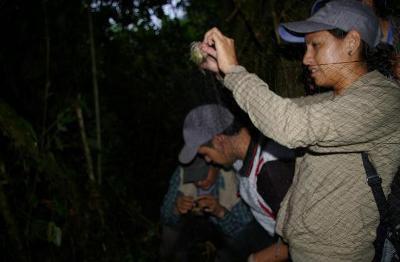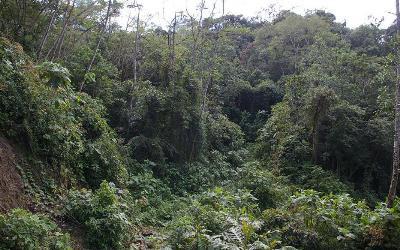Marybel Crespo Saucedo
The aims of this project is to evaluate the population status and distribution range of the Yellow-rumped Antwren (Terenura sharpei) an endemic and endanger bird of the Bolivian Yungas.

The Yellow-rumped Antwre, (Terenura sharpei) is a species considered endangered due its small population size. It has a limited range of distribution, only found in Peru and Bolivia. In Bolivia the species is found in La Paz and Cochabamba in humid montane forests of the Andes, called the Yungas. The Peru-Bolivian Yungas have a high conservation priority. This is because of the extensive and rapid logging of the region’s forests, the growth in agriculture of citrus fruits, coca, coffee and tea. These activities endangers many of the endemic bird species that are restricted to this region.

There currently exist few records of Terenura sharpei, and very little is known about its current conservation status. We do not know if the species is still found at historical sites and no known viable population is documented in Bolivia. There is a reason to believe that current protected areas, such as the Carrasco National Park in Cochabamba and the Amboró National Park in Santa Cruz hold at least small populations of Terenura sharpei. However, these protected areas are threatened by the constant invasion of settlers who cut remaining forests to establish coca plantations. Therefore, a high priority exists to initiate studies inside these protected areas to help to determine the population status and ecology of this unique and endemic species. Research on its distribution and abundance will provide the first quantitative data on its current state of conservation in Bolivia.
Additionally, this study will provide data on its ecological requirements, which will serve to start monitoring programs at specific sites where it could potentially be found as well as permitting a proactive conservation strategy. This study will be done together with the support of the administrative staff of Carrasco National Park, therefore strengthening the functions for which this protected area was originally established.
Finally, through this project we are planning to carry out workshops destinated to Carrasco park guards in bird population monitoring techniques and educational workshops in key sites to local communities.